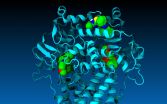(Press-News.org) Individual transistors made from carbon nanotubes are faster and more energy efficient than those made from other materials. Going from a single transistor to an integrated circuit full of transistors, however, is a giant leap.
"A single microprocessor has a billion transistors in it," said Northwestern Engineering's Mark Hersam. "All billion of them work. And not only do they work, but they work reliably for years or even decades."
When trying to make the leap from an individual, nanotube-based transistor to wafer-scale integrated circuits, many research teams, including Hersam's, have met challenges. For one, the process is incredibly expensive, often requiring billion-dollar cleanrooms to keep the delicate nano-sized components safe from the potentially damaging effects of air, water, and dust. Researchers have also struggled to create a carbon nanotube-based integrated circuit in which the transistors are spatially uniform across the material, which is needed for the overall system to work.
Now Hersam and his team at Northwestern University have found a key to solving all these issues. The secret lies in newly developed encapsulation layers that protect carbon nanotubes from environmental degradation.
Supported by the Office of Naval Research and the National Science Foundation, the research appears online in Nature Nanotechology on September 7. Tobin J. Marks, the Vladimir N. Ipatieff Research Professor of Chemistry in Northwestern's Weinberg College of Arts and Sciences and professor of materials science and engineering in the McCormick School of Engineering, coauthored the paper. Michael Geier, a graduate student in Hersam's lab, was first author.
"One of the realities of a nanomaterial, such as a carbon nanotube, is that essentially all of its atoms on the surface," said Hersam, the Walter P. Murphy Professor of Materials Science and Engineering. "So anything that touches the surface of these materials can influence their properties. If we made a series of transistors and left them out in the air, water and oxygen would stick to the surface of the nanotubes, degrading them over time. We thought that adding a protective encapsulation layer could arrest this degradation process to achieve substantially longer lifetimes."
Hersam compares his solution to one currently used for organic light-emitting diodes (LEDs), which experienced similar problems after they were first realized. Many people assumed that organic LEDs would have no future because they degraded in air. After researchers developed an encapsulation layer for the material, organic LEDs are now used in many commercial applications, including displays for smartphones, car radios, televisions, and digital cameras. Made from polymers and inorganic oxides, Hersam's encapsulation layer is based on the same idea but tailored for carbon nanotubes.
To demonstrate proof of concept, Hersam developed nanotube-based static random-access memory (SRAM) circuits. SRAM is a key component of all microprocessors, often making up as much as 85 percent of the transistors in the central-processing unit in a common computer. To create the encapsulated carbon nanotubes, the team first deposited the carbon nanotubes from a solution previously developed in Hersam's lab. Then they coated the tubes with their encapsulation layers.
Using the encapsulated carbon nanotubes, Hersam's team successfully designed and fabricated arrays of working SRAM circuits. Not only did the encapsulation layers protect the sensitive device from the environment, but they improved spatial uniformity among individual transistors across the wafer. While Hersam's integrated circuits demonstrated a long lifetime, transistors that were deposited from the same solution but not coated degraded within hours.
"After we've made the devices, we can leave them out in air with no further precautions," Hersam said. "We don't need to put them in a vacuum chamber or controlled environment. Other researchers have made similar devices but immediately had to put them in a vacuum chamber or inert environment to keep them stable. That's obviously not going to work in a real-world situation."
Hersam imagines that his solution-processed, air-stable SRAM could be used in emerging technologies. Flexible carbon nanotube-based transistors could replace rigid silicon to enable wearable electronics. The cheaper manufacturing method also opens doors for smart cards -- credit cards embedded with personal information to reduce the likelihood of fraud.
"Smart cards are only realistic if they can be realized using extremely low-cost manufacturing," he said. "Because our solution-processed carbon nanotubes are compatible with scalable and inexpensive printing methods, our results could enable smart cards and related printed electronics applications."
INFORMATION:
Typhoon Kilo continues to thrive in the Northwestern Pacific and imagery from NASA's Terra satellite late on September 7 showed that the storm still maintained a clear eye.
The MODIS or Moderate Resolution Imaging Spectroradiometer instrument that flies aboard Terra provided a visible-light image of Kilo on September 7 at 23:50 UTC (7:50 p.m. EDT). The image showed thick bands of thunderstorms wrapping around the eastern and northern quadrants of the visible eye.
At 0900 UTC (5 a.m. EDT) on September 9, Typhoon Kilo had maximum sustained winds near 65 knots (74.8 mph/120.4 ...
This news release is available in French.
Montreal, September 8, 2015 -- All countries have contributed to recent climate change, but some much more so than others. Those that have contributed more than their fair share have accumulated a climate debt, owed to countries that have contributed less to historical warming.
This is the implication of a new study published in Nature Climate Change, in which Concordia University researcher Damon Matthews shows how national carbon and climate debts could be used to decide who should pay for the global costs of climate ...
Scientists at Texas A&M University have made additional progress in understanding the process behind scar-tissue formation and wound healing -- specifically, a breakthrough in fibroblast-to-fibrocyte signaling involving two key proteins that work together to promote fibrocyte differentiation to lethal excess -- that could lead to new advances in treating and preventing fibrotic disease.
A new study led by biologists Richard Gomer and Darrell Pilling and involving Texas A&M graduate students Nehemiah Cox and Rice University technician Varsha Vakil points to a naturally ...
Contrary to popular belief, the worst injuries baseball catchers face on the field come from errant bats and foul balls, not home-plate collisions with base runners, according to findings of a study led by researchers at the Johns Hopkins University School of Medicine.
The research, done in collaboration with Baltimore Orioles trainers Brian Ebel and Richard Bancells, involved analysis of all catcher injuries during major league baseball games over a 10-year period.
A summary of the findings, published ahead of print Aug. 28 in the American Journal of Sports Medicine, ...
AUGUSTA, Ga. - The regular physical trauma that appears to put professional football players at risk for degenerative brain disease may also increase their risk for hypertension and cardiovascular disease, researchers say.
The frequent hits football players experience, particularly frontline defenders such as linemen, likely continually activate the body's natural defense system, producing chronic inflammation that is known to drive blood pressure up, according to a study in The FASEB Journal.
While strenuous physical activity clearly has its benefits, it also produces ...
Researchers at Southern Methodist University, Dallas, have discovered three new drug-like compounds that could ultimately offer better odds of survival to prostate cancer patients.
The drug-like compounds can be modified and developed into medicines that target a protein in the human body that is responsible for chemotherapy resistance in cancers, said biochemist Pia D. Vogel, lead author on the scientific paper reporting the discovery.
So far there's no approved drug on the market that reverses cancer chemotherapy resistance caused by P-glycoprotein, or P-gp for short, ...
Using "mini-brains" built with induced pluripotent stem cells derived from patients with a rare, but devastating, neurological disorder, researchers at University of California, San Diego School of Medicine say they have identified a drug candidate that appears to "rescue" dysfunctional cells by suppressing a critical genetic alteration.
Their findings are published in the September 8 online issue of Molecular Psychiatry.
The neurological disorder is called MECP2 duplication syndrome. First described in 2005, it is caused by duplication of genetic material in a specific ...
ALEXANDRIA, VA--The latest research on hearing loss, head and neck cancers, sleep apnea and other otolaryngic topics will be presented in Dallas, TX, September 27-30, at the 2015 Annual Meeting & OTO EXPO? of the American Academy of Otolaryngology--Head and Neck Surgery Foundation (AAO-HNSF), the largest annual meeting of ear, nose, throat, head and neck physicians in the world.
Abstracts of the research to be presented are now available online at http://oto.sagepub.com/content/153/1_suppl.toc. The 2015 Annual Meeting features more than 380 oral and 180 poster presentations ...
ATLANTA - September 8, 2015-New American Cancer Society Cancer Survivorship Care guidelines released today provide primary care clinicians with recommendations for providing comprehensive care to the estimated 1.2 million survivors of colorectal cancer in the United States.
The guidelines are the second to be published in a series of cancer survivorship care guidelines developed by the American Cancer Society. They provide guidance on identifying and managing potential physical and psychosocial long-term and late effects of colorectal cancer and its treatment, as well ...
PITTSBURGH, Sept. 8, 2015 - Young people across the United States who smoke electronic cigarettes are considerably more likely to start smoking traditional cigarettes within a year than their peers who do not smoke e-cigarettes, according to an analysis led by the University of Pittsburgh Center for Research on Media, Technology, and Health (CRMTH) and the Dartmouth-Hitchcock Norris Cotton Cancer Center. The study, funded by the National Cancer Institute (NCI), was the first to assess this relation in a national U.S. sample of youth, and to include people older than 18 ...




